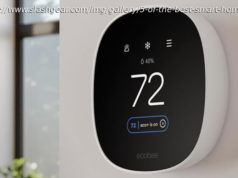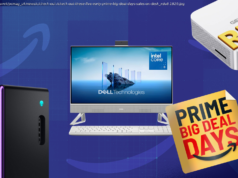Apple’s new Mac Mini doesn’t look much different from its predecessor, and it’s more expensive. Yet the changes under the hood make a case for its consideration as your new Mac. Can this entry-level machine hold its own? Read our Apple Mac Mini (2018) review to find out.
Believe it or not, Apple’s Mac Mini is 13 years old, making it the second oldest product line still in Apple’s portfolio. It even outdates the MacBook Pro, which didn’t appear until 2006.
Unlike the MacBook Pro, however, the Mini was neglected. A quick updated followed the original, but the third-gen didn’t appear until 2010.Apple sold the same design for eight years and didn’t update the internals for four (since 2014). That left budget Mac fans settling for old hardware.
Now, we’re finally seeing the fourth design. The new Mini, with the latest Intel chip, fixes that problem. Yet it’s no charity. Mac fans must pay at least $800 — $300 more than the previous entry. It’s not an outrageous price, but it bumps the Mac Mini into competition with a different league of hardware. Is the Mini still the perfect gateway drug for would-be Apple addicts?
Though the 2018 Mac Mini is a redesign, it doesn’t throw out the previous look. It’s still a thin, slab of metal, sitting on a round rubber base that’s invisible when the desktop is in use. The front and sides are almost entirely flat, broken only by the Apple log on the top and a tiny, tiny LED on the lower right corner. Even the power button is around back, where it joins the ports.
It’s the same size in every dimension as before, and nearly the same weight at 2.9 pounds. The color has changed, however. Previously available only in silver, the new model only ships in Space Gray. It’s a simple way to tell the two apart and helps the 2018 Mac Mini fit in with other modern Apple devices where silver, though often available, is no longer the most fashionable choice.
There’s not much else to say, really, and that’s the point. If Apple could ship a desktop with a cloaking device, it would, but the Mini’s subtle elegance is the next best thing. It’s built to be ignored.
That said, the Mac Mini doesn’t feel as small as it once did. Intel’s Hades Canyon NUC is about the same size (though more rectangular), yet it comes with a discrete graphics chip. Intel NUC models with integrated graphics are a bit more than four inches on a side and one to two inches thick, depending on the model. Asus, Zotac, and MSI make a variety of small desktops that beat the Mac Mini on size – though not all have eighth-generation Intel processors.
Size isn’t the only reason why a Mac Mini can fade into its surroundings. Noise is at an absolute minimum. The fan only ramps up to a noticeable level during heavy workloads and, even then, it’s a whisper. We can’t remember the last time we tested a desktop this quiet.
Connectivity separates the new Mac Mini from the old model, and every PC competitor. Turn it around, and you’ll find three Thunderbolt 3 ports, two USB 3 ports, Ethernet, HDMI 2.0, and a 3.5mm headphone jack.
The reliance on Thunderbolt 3 is very Apple. It’s also a bit absurd. Thunderbolt 3 remains the connection of premium devices, so four such ports on an affordable desktop is strange. Intel’s NUC devices offer more USB-A 3.0 ports but, in recent models, pair them with a single Thunderbolt 3. We think that’s a better balance.
We’re not too annoyed, though. Unlike MacBooks, the Mac Mini places Thunderbolt 3 alongside a reasonable selection of alternatives. There’s USB-A 3.0 for mouse and keyboard as well as HDMI 2.0 for use with a monitor or HDTV. Most Mac Mini devices will be paired with only a small handful of peripherals, so the connectivity here is more than adequate.
Apple doesn’t care much for user upgrades, and the new Mac Mini is no exception. It’s technically possible to upgrade the RAM. You’ll have to pry around the rubber base, however, to even access the screws, and then you’ll have to completely remove the mainboard to remove and replace the RAM. The hard drive isn’t user serviceable.
Most small desktops are hard to upgrade, but some make limited upgrades easier. Intel’s NUC line, which is built with do-it-yourself users in mind, makes hard drive and RAM upgrades as simple as removing the cover.
There’re limits to the benefits of upgrading such components, however. If you want a desktop that you can improve in the future, consider a proper tower PC like the Dell Inspirion 5680.
The base Mac Mini ships with an Intel Core i3-8100H, which can be upgraded to either a Core i5-8400B or Core i7-8700B. The Core i5 and i7 processors not only have more cores (six, up from four) but also a higher thermal design power. Put another way, the chips are designed with heavier power consumption in mind, and that translates to much better performance in all scenarios.
Our review unit was the $1,100 model with a Core i5-8400B processor, 8GB of RAM, and a 256GB solid state drive. It fared well in our tests.
While the Mac Mini sets no records, the Intel Core i5-8400B’s performance is excellent. Geekbench 4 shows a multi-core score of 20,432. That easily defeats Intel’s Hades Canyon NUC, which hit a score of 16,176. In fact, the Mac Mini trades blows with desktops that pack the Core i7-8700. While it’s possible to buy a Core i7-8700 desktop for a couple hundred less than the Mini, most worthwhile competitors are in the same price range, and they’re often full tower PCs.
We didn’t test the Mac Mini with a Core i3 processor, but Geekbench 4’s public benchmark log makes a comparison easy. Here, too, the results are favorable for the Core i5 model. Upgrading from Core i3 to Core i5 nets a single-core performance gain of about 12 percent, which isn’t earth-shattering, but the multi-core score rises 50 percent. That’s a difference you’ll notice if you throw even a modestly demanding task at your Mac Mini.
What about the Core i7 model? It’s faster still, but it remains a six-core chip like the Core i5, so the gain is less than 15 percent in multi-core. That’s worthwhile for power users, but the Core i5 is the value sweet spot.
Oh, and here’s a fun fact. Apple hasn’t updated the iMac’s processors yet, so our Core i5-powered Mac Mini defeats most configurations. You’ll have to upgrade to the fastest processor available in the iMac (and we’re talking the iMac here, not the $5,000 iMac Pro) to beat our Mac Mini in single-core tests, and still the iMac will lose slightly in multi-core tests.
That’s not to say you’d notice a difference in normal use, but it’s impressive given the Mac Mini’s smaller size and more affordable price.
As is often true of Macs, the hard drive is a stunner, hitting a read speed of 2,753MB/s and a write speed of 1,238MB/s (according to the BlackMagic benchmark). We’ve never tested a comparably priced desktop with hard drive performance on this level, and most are roughly half as quick, at best.
Even the Intel Optane drive in our Hades Canyon NUC review unit achieved a read speed of 1,333MB/s. That isn’t an apples-to-apples comparison, unfortunately, because the benchmark we use to test Windows machines does not support MacOS. Still, the Mac Mini’s storage performance stands out from its peers.
So far, so good, but the Mac Mini does have one big gap in its performance. Gaming.
All versions of the Mac Mini ship with Intel UHD Graphics 630. No discrete graphics option is available. That means you’re out of luck if you want to play even the least demanding 3D games.
We fired up Rocket League and found that, even at Performance quality settings and 1080p resolution, gameplay wasn’t smooth enough to be enjoyable.






